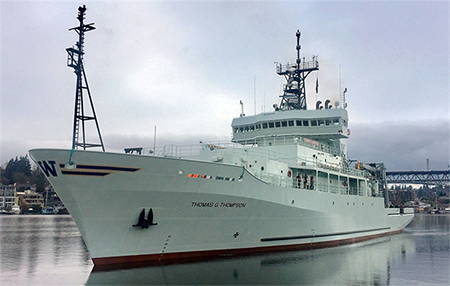Propagation of Intra-Seasonal Tropical Oscillations (PISTON)
Where: Philippine Sea
When: Summer and Fall 2018

Monsoons characterize the seasonal variations of rainy periods in tropical regions. The region between the Indian and Pacific Oceans is a vast network of islands, small seas, and channels that is often referred to as the 'Maritime Continent' because its behavior is a mixture of ocean and land properties. The Maritime Continent acts as strong but sometimes surmountable barrier to the eastward propagation of large masses of oceanic convection. In the Summer and Fall 2018, a team from CSD and PSD will participate in a series of research cruises in the Philippine Sea. The researchers will collect air-sea flux, cloud, and boundary-layer turbulence observations aboard the University of Washington R/V Thomas G Thompson. The ship will be equipped with a variety of other atmospheric and oceanographic measurement systems, which will be used to investigate the role of ocean-air versus land-air interactions in the daily cycle of convective precipitation in the coastal regions.
Large masses of atmospheric convection propagating from the Indian Ocean into and across the Pacific Ocean is a well-known precursor to extreme weather in the U.S. By improving our understanding of the convective and air-sea interaction processes, we can improve U.S. weather forecasts at 1-3 week timescales.
Partnering institutions include NASA, Colorado State University (CSU), Oregon State University, Applied Physics Laboratory at the University of Washington (APL-UW), University of Connecticut, University of Miami, the U.S. Naval Research Laboratory (NRL), and the Office of Naval Research (ONR).